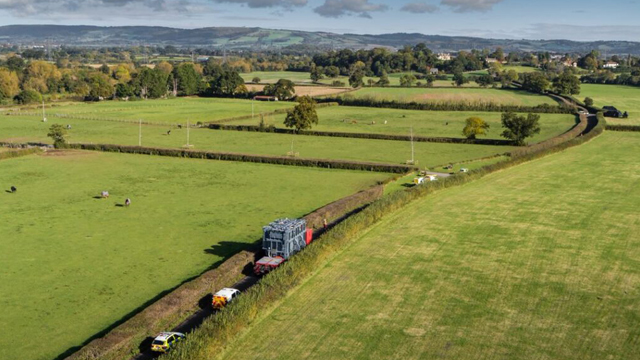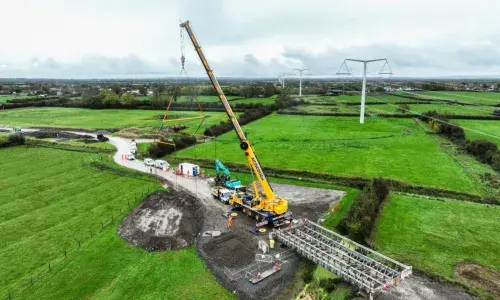
Supergrid transformer’s epic journey
178-tonne electricity transformer delivered to Taunton substation via country lanes
An electricity transformer, measuring 9m x 5m and 5m high – the height of a two story building – has been delivered to Dunball Wharf near Bridgwater. It then continued its journey via the country lanes of Somerset to the National Grid substation in Taunton, where it arrived yesterday (Sunday 11 October).
In a first for National Grid, working in partnership with haulage contractors Mammoet, the 178-tonne transformer arrived via a barge to Dunball Wharf, with specialist lifting equipment enabling the transformer to be delivered through the narrow wharf.
Transformers step up or step down the voltage of electricity between different circuits and play a vital role in helping ensure the UK continues to enjoy safe and reliable electricity supplies. This new supergrid transformer will support the connection of low-carbon energy in the South West. It will reinforce electricity supplies to the local area, enabling National Grid to remove pylons and lines on the existing 132kV network to make room for the new Hinkley Connection.
The journey and route were carefully planned with Avon and Somerset Police and Highways England to minimise disruption to the public and road users.
The transformer was delivered on a 50 metres long specialist vehicle, which travelled at approximately 5 miles per hour.
The transformer left from Dunball Wharf early on Saturday morning (10 October) via the A38. After being transferred to a smaller trailer, it left a weighbridge on the M5 early on Sunday morning, arriving at the substation mid-afternoon. As the roads between the M5 and the substation are very narrow, the project team needed to coordinate a closure for a short time for this final leg of the journey.
National Grid project engineer Michele Nolan said: “Millions of people rely on us to supply their electricity without interruption, day in and day out, so it’s important that we keep our substations and the equipment in them working efficiently.
"It’s a first for National Grid to deliver such a big piece of essential equipment via a small, privately-owned wharf, but we’ve been planning this for months to ensure we can continue to deliver power reliably to the local area.”


